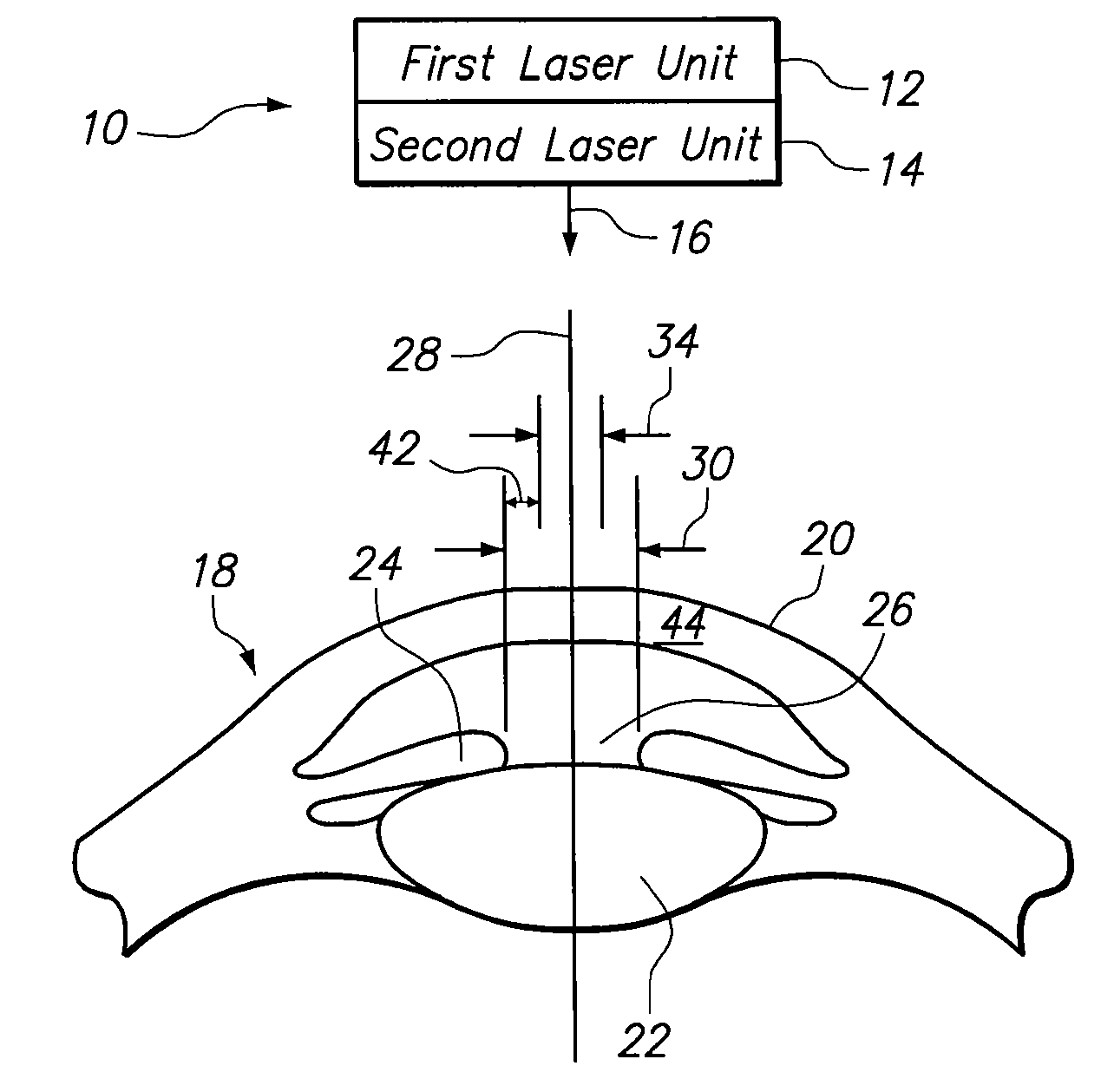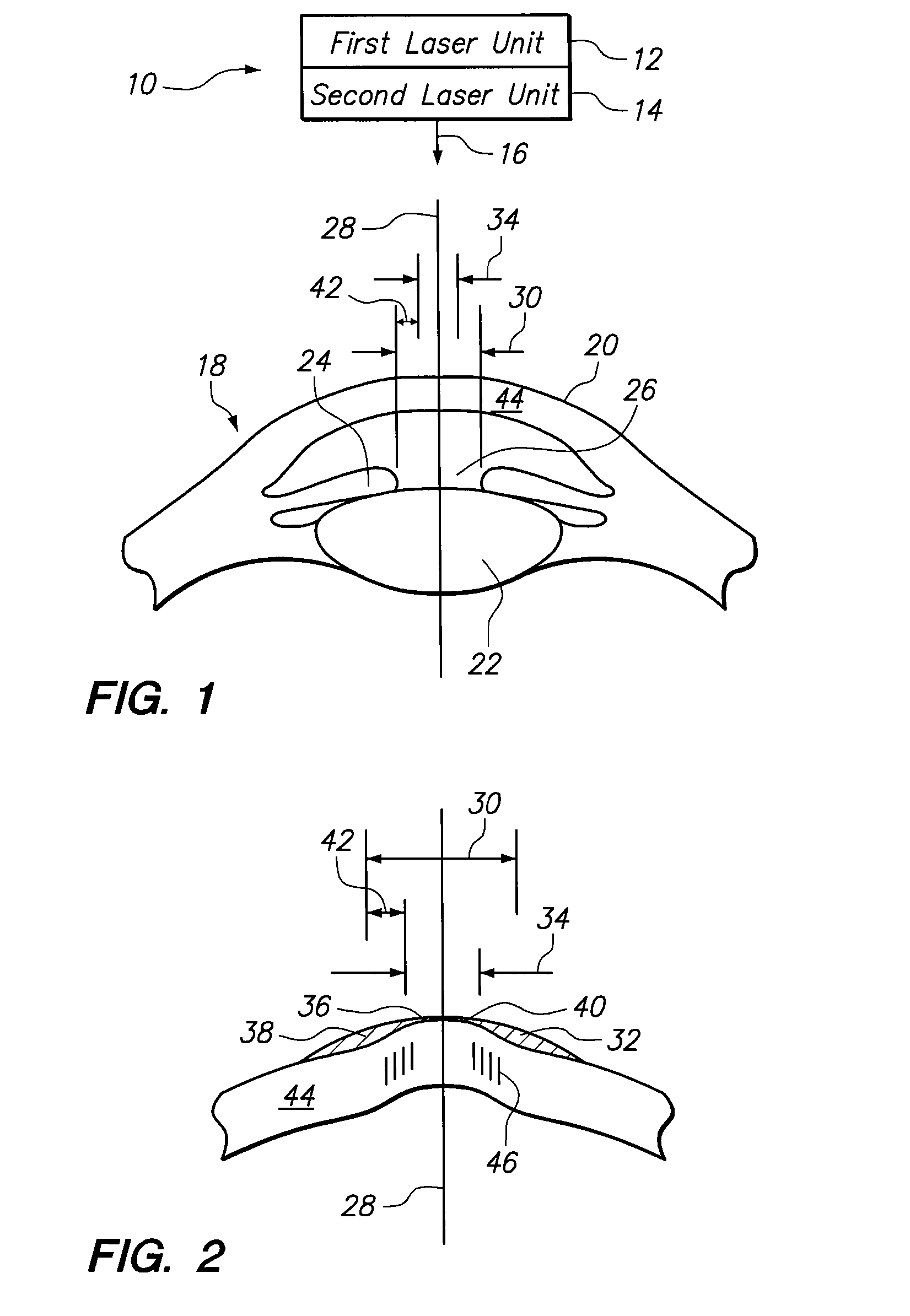Methods for Employing Intrastromal Corrections in Combination with Surface Refractive Surgery to Correct Myopic/Hyperopic Presbyopia
a technology of surface refractive surgery and intrastromal correction, which is applied in the field of surgical procedures for the correction of myopic/hyperopic presbyopia, can solve the problems of reducing the ability to accommodate the patient, adversely affecting his/her near vision, etc., and achieves the effect of reducing the ability to accommoda
- Summary
- Abstract
- Description
- Claims
- Application Information
AI Technical Summary
Benefits of technology
Problems solved by technology
Method used
Image
Examples
Embodiment Construction
[0015]Referring initially to FIG. 1, a system for purposes of the present invention is shown and is generally designated 10. As shown, the system 10 includes a first laser unit 12 and a second laser unit 14. Further, each of the laser units 12 and 14 is shown respectively positioned to direct a laser beam along the beam path 16 toward an eye generally designated 18. Preferably, the first laser unit 12 is of a type well known in the pertinent art, such as an excimer laser. Specifically, the first laser unit 12 needs to be capable of photoablating (i.e. removing) tissue from the cornea 20 of the eye 18. On the other hand, the second laser unit 14 is preferably of a type that is capable of weakening tissue in the cornea 20 by performing Laser Induced Optical Breakdown (LIOB). Accordingly, the laser beam generated by the second laser unit 14 is preferably a pulsed laser beam having a sequence of individual pulses that are each less than about one picosecond in duration (i.e. a femtoseco...
PUM
 Login to View More
Login to View More Abstract
Description
Claims
Application Information
 Login to View More
Login to View More - R&D
- Intellectual Property
- Life Sciences
- Materials
- Tech Scout
- Unparalleled Data Quality
- Higher Quality Content
- 60% Fewer Hallucinations
Browse by: Latest US Patents, China's latest patents, Technical Efficacy Thesaurus, Application Domain, Technology Topic, Popular Technical Reports.
© 2025 PatSnap. All rights reserved.Legal|Privacy policy|Modern Slavery Act Transparency Statement|Sitemap|About US| Contact US: help@patsnap.com


